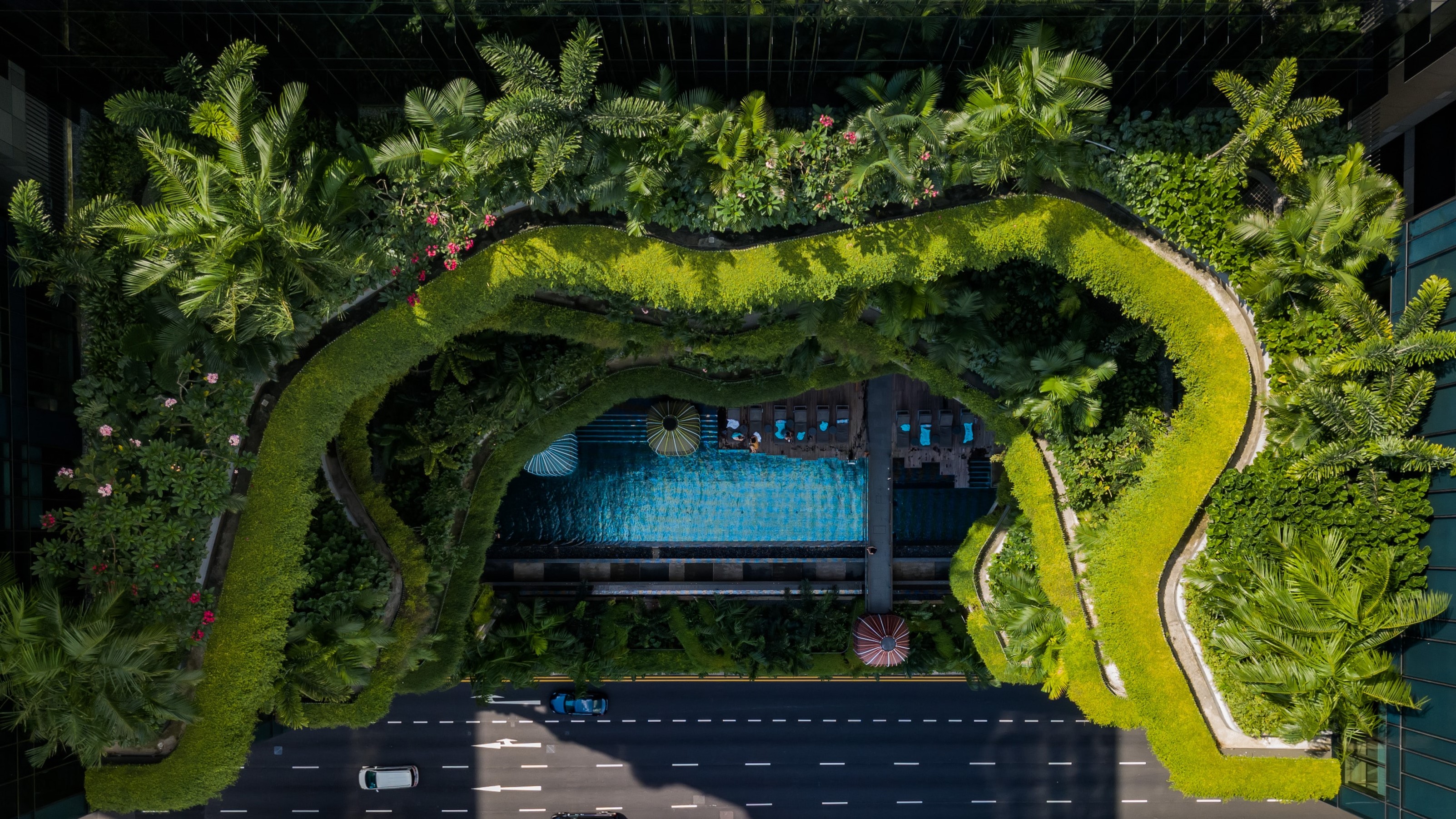

Every day humans are becoming more technically advanced, taking in all kinds of development. But this technological growth can also have a large impact on our natural environment. With rapid urbanization, there are certain factors such as atmospheric pollution, and global warming, that need to be addressed in order to protect the planet. Cities are trading green patches for concrete structures and other concrete structures and are completely ignoring the importance of natural resources. However, it is quite difficult to reduce the amount of construction work as rapid urbanization comes along with population growth which ultimately increases individual demands. In such cases, structures that are environment-friendly can help in elevating the oxygen level, thus reducing pollution levels in that area, along with providing habitat to other living creatures. Such structures being environmental-friendly are also aesthetically appealing due to the touch of greenery in the form of gardens. All these contribute to having a positive impact on the urban environment.
The terminology “BGI” is quite commonly used by environmentalists and engineers who design such structures. How is it related to the above statements and what is the conceptuality behind it, let us take a look!
The blue and green colours on the earth are the representatives of water and vegetation respectively. The infrastructure that combines water and vegetation with itself ultimately forms 2 different types of infrastructure viz. Blue infrastructure (rivers, canals, wetlands, floodplains, etc.) and Green infrastructure (parks, rain gardens, infiltration basins, stormwater greenstreets, etc). Apart from these, the 3rd type, also known as the Grey infrastructure, consists of all the human-engineered structures such as dams, seawalls, roads, water treatment plants, etc.

These separate blue and green infrastructures when merged, are known as BGI (Blue-Green Infrastructures). To define it, blue-green infrastructure is a “strategically planned network of natural and semi-natural areas with other environmental features designed and managed to deliver a wide range of ecosystem service”. To simplify it further, the blue-green infrastructure helps in enhancing the ecosystem by improving the air quality, mitigating climate issues, water purification, etc.
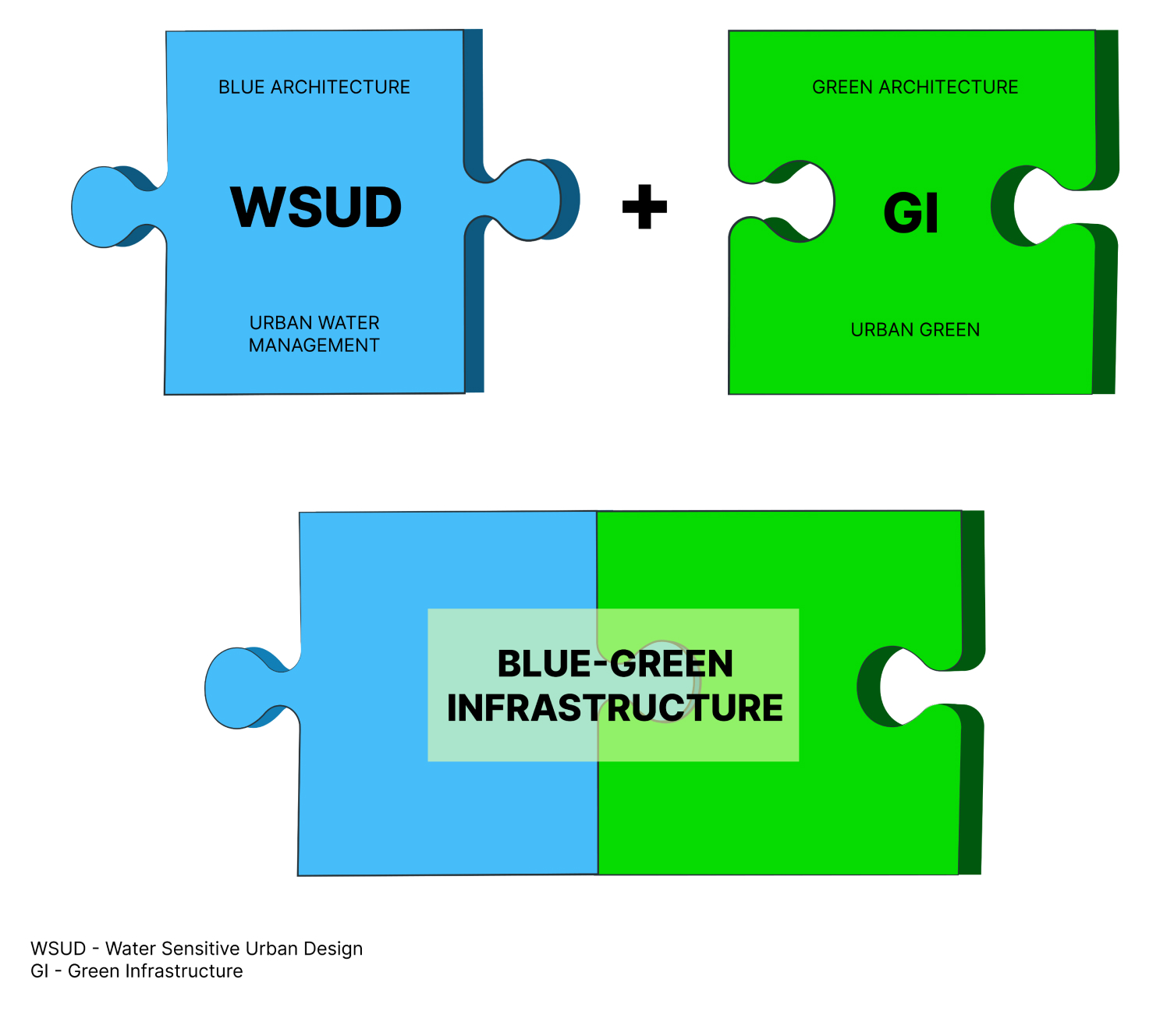
BGI is said to be a recognition of green spaces and water capacity to benefit the environment. The developing countries at this stage need to stimulate the perception of right and accurate management of urban development to maintain a balance between all the environmental elements. The plus point of adapting to BGI is that it influences five different aspects.
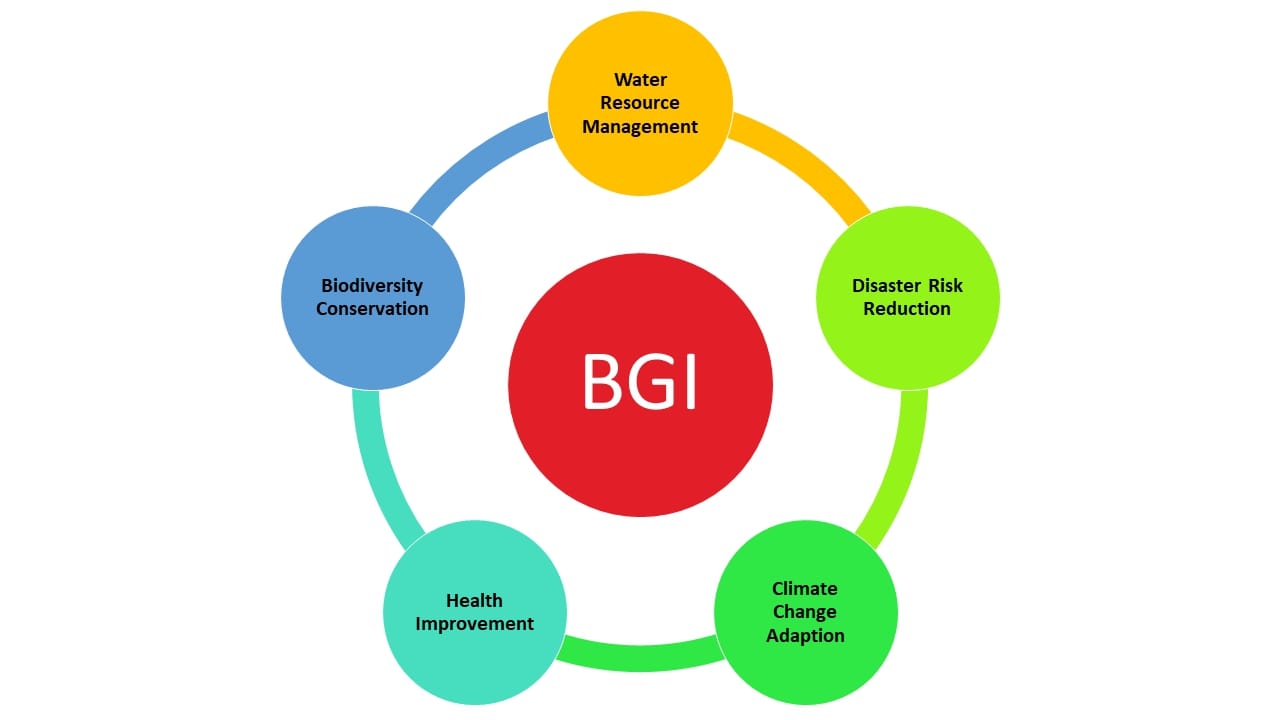
The consequences of improper management of all these aspects can prove to be a stimulus to the 4 major global risks - (1) natural disasters, (2) extreme weather, (3) biodiversity loss, and (4) climate action failure. These risks will not have an immediate but decadal negative impact on the earth. To avoid it, most countries are adopting sustainable ways to tackle these global risks by investing more in environmentally friendly solutions and BGI is one of them. The key to sustainable development is:
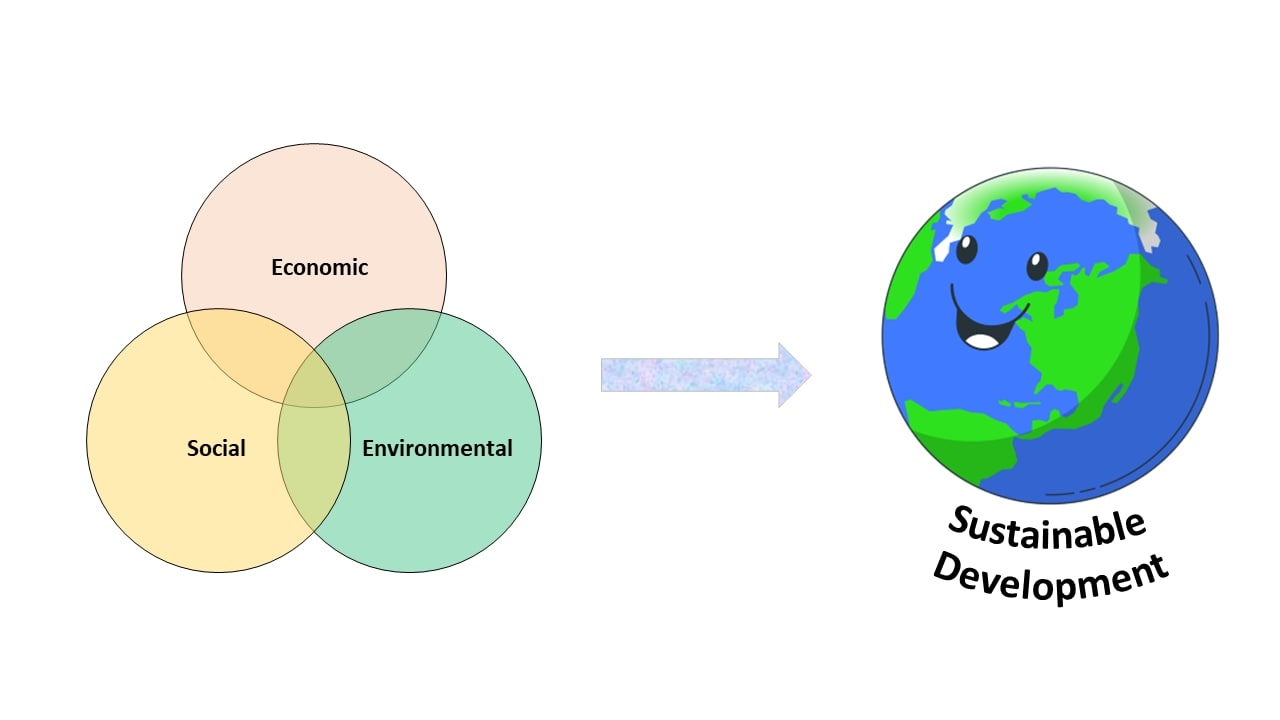
Urbanisation is the main contributor to degrading green and blue patches on the earth's surface. Due to the inability of proper planning, regulating and monitoring the process of urbanisation, one can observe this extensive loss of environmental commodities. Several studies have been conducted to track the rapidly growing urbanisation and its effect on the environment. The following are a few examples of India’s metropolitan cities:

Efforts to understand and include the blue-green infrastructure alongside grey have been seen throughout India’s urban planning divisions at the national, regional and municipal levels. Before this, the only meaning of the term infrastructure was associated with grey infrastructure. During the discussion regarding the Fourth Five Year Plan (1964-1969), the term green infrastructure was looked upon as an act of protecting the environment. Later after the formation of the Environment Ministry in 1980, our country devised the National Action Plan on Climate Change (NAPCC) in 2008, concerning the UN’s Green Economy Initiative and UN Framework Convention on Climate Change. Along with it, there are two more strategic projects very well known as the Smart Cities Missions and the Atal Mission for Rejuvenation and Urban Transformation (AMRUT). AMRUT is responsible for upgrading the green space while Smart Cities Mission involves water supply, sanitation, and open space preservation. Both these are contributing to improving the quality of life the country’s citizens are currently having.
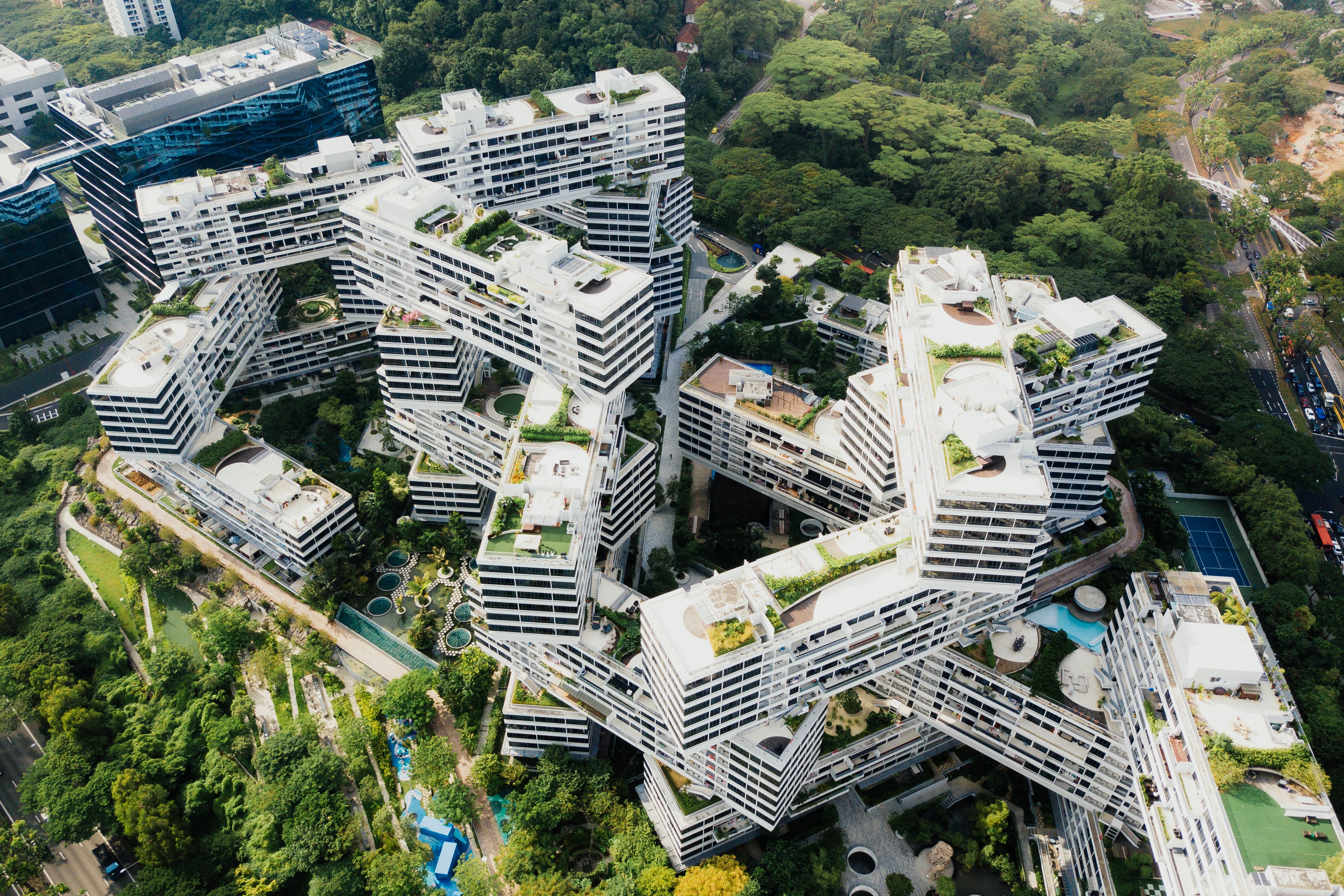
Different metropolitan cities like Delhi, Bhopal, Madurai and Bengaluru have been aiming to upgrade their master plans by incorporating the blue-green elements through well-planned strategies. But as they are already densely built, scarcity of land is the new challenge for installing the blue-green components, thus highly efficient and adaptable development of BGI is required. The following table gives an overview of the Blue-Green Masterplans:
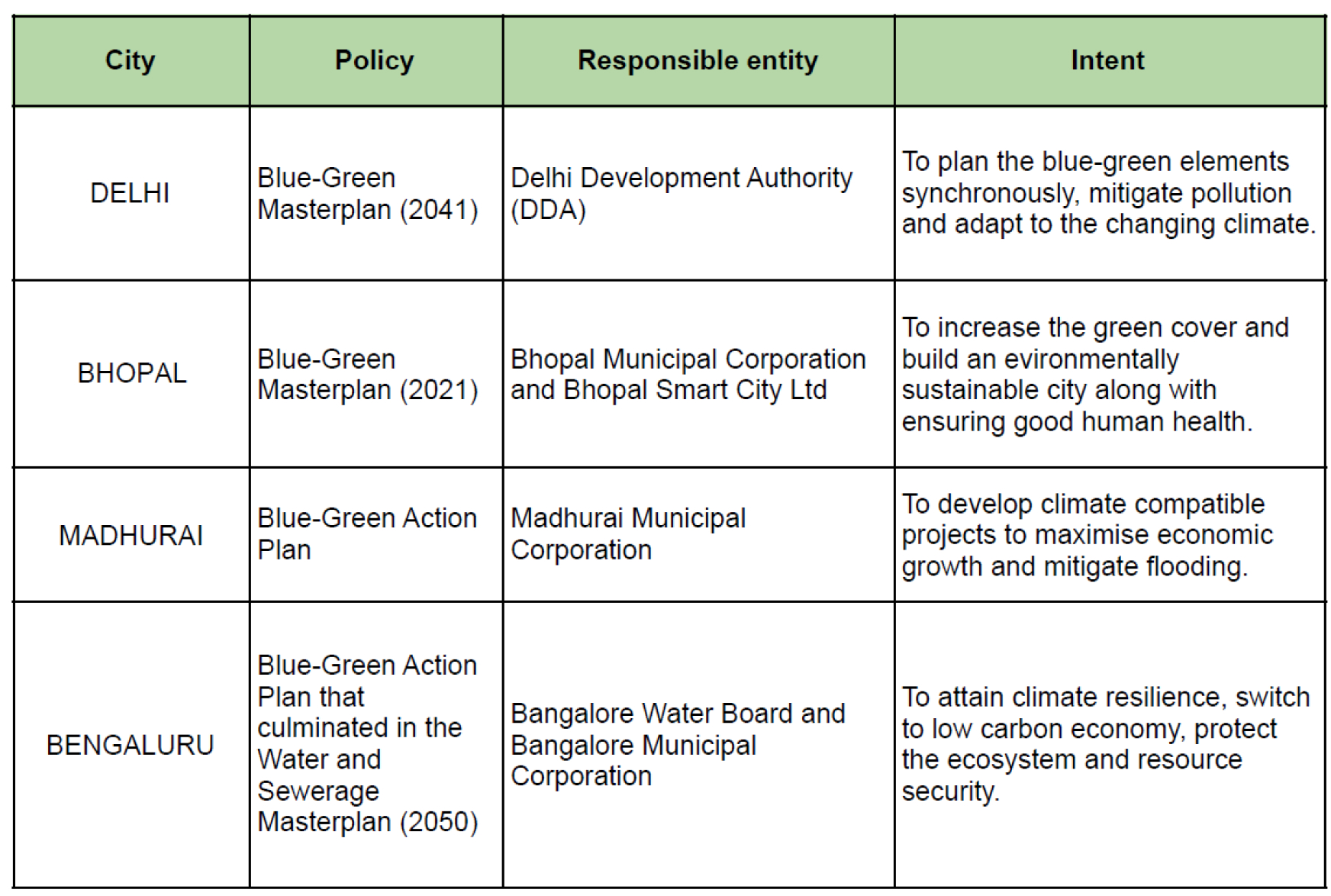
Introducing BGI in different sectors like housing, transportation, water, etc. might bring improvements in provisioning, regulating and supporting the growth of cultural ecosystem services. This altogether will result in leading a healthy lifestyle as well as global sustainability. When compared with the Global Sustainable Development Goals (SDGs) provided by the United Nations, BGI contributes to almost five of those.
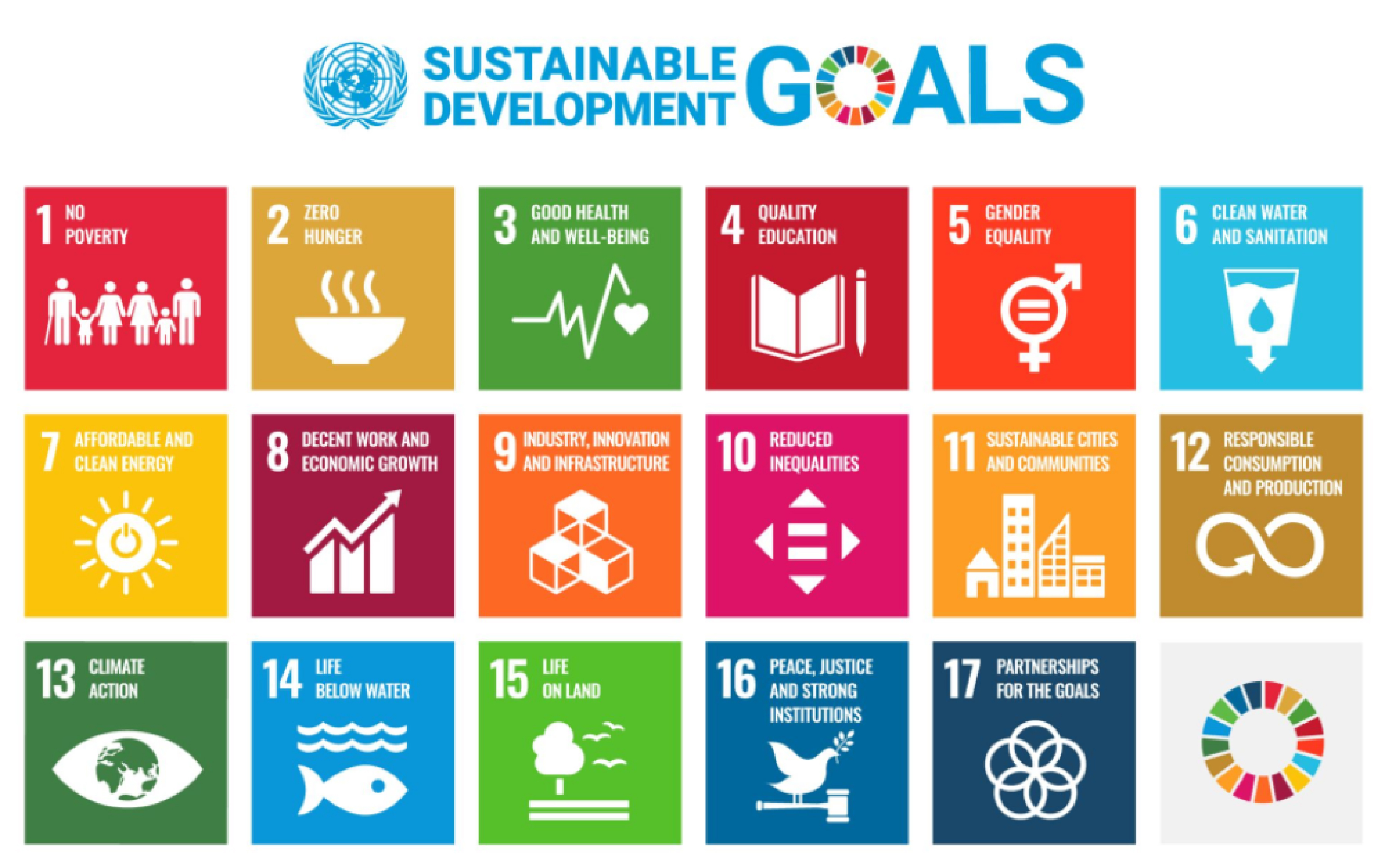
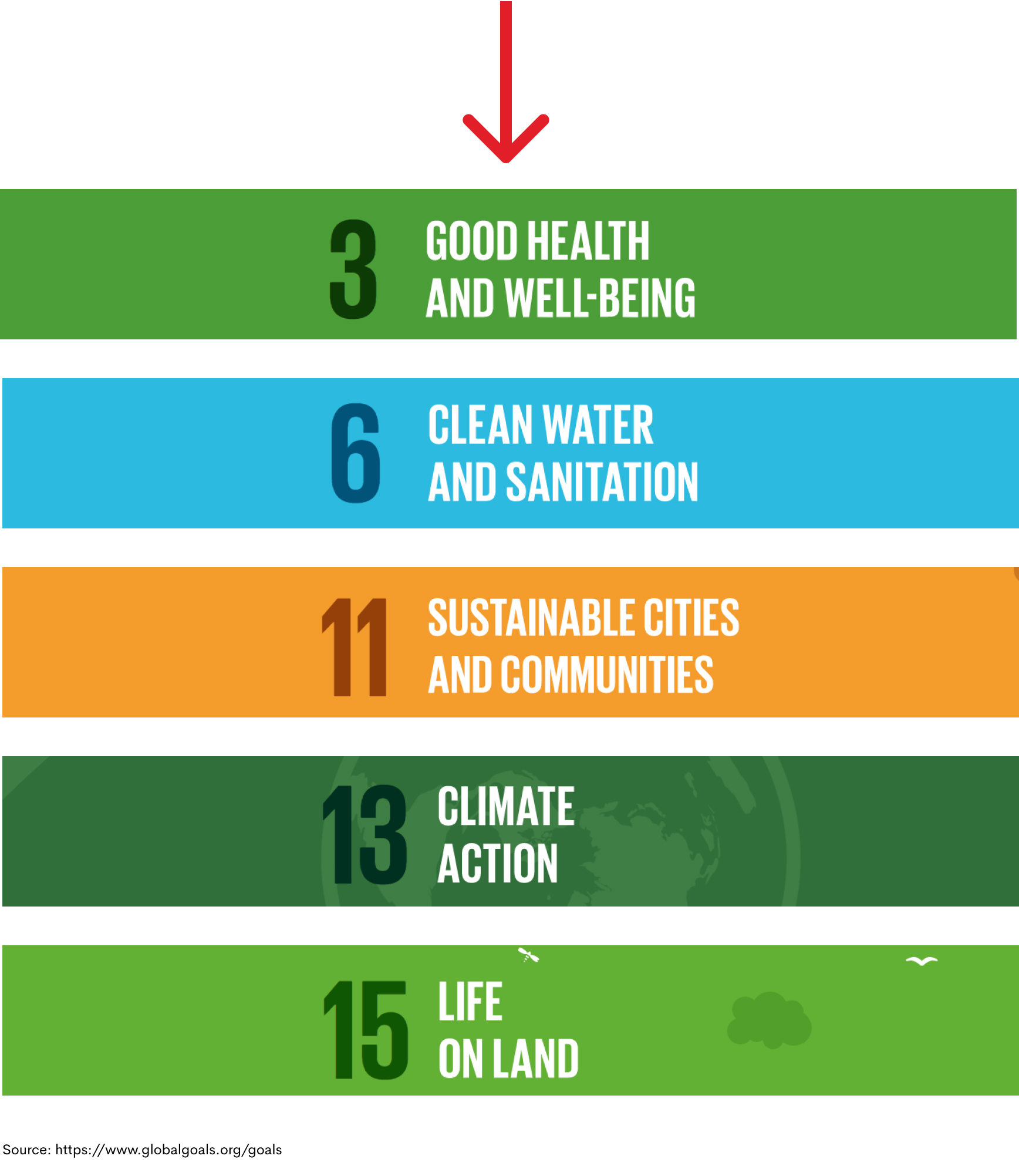
With the help of BGI, we can achieve most of the above-listed goals, ultimately resulting in :
Although the concept of BGI is new, many global cities have already started to make the evolution, driven by worsening climate change impacts and circumstances. While the concept of green infrastructure has gained some acceptance in India, the country must also study blue infrastructure as a part of its sustainable transition. While planning for adaptation and resilience, it is vital to combine and protect the hydrological and ecological features of the urban landscape. India needs a comprehensive strategy that acknowledges the environment is essential to the economical and social stability of the cities, and the current blue-green resources will need to be managed mindfully for sustainable future generations.